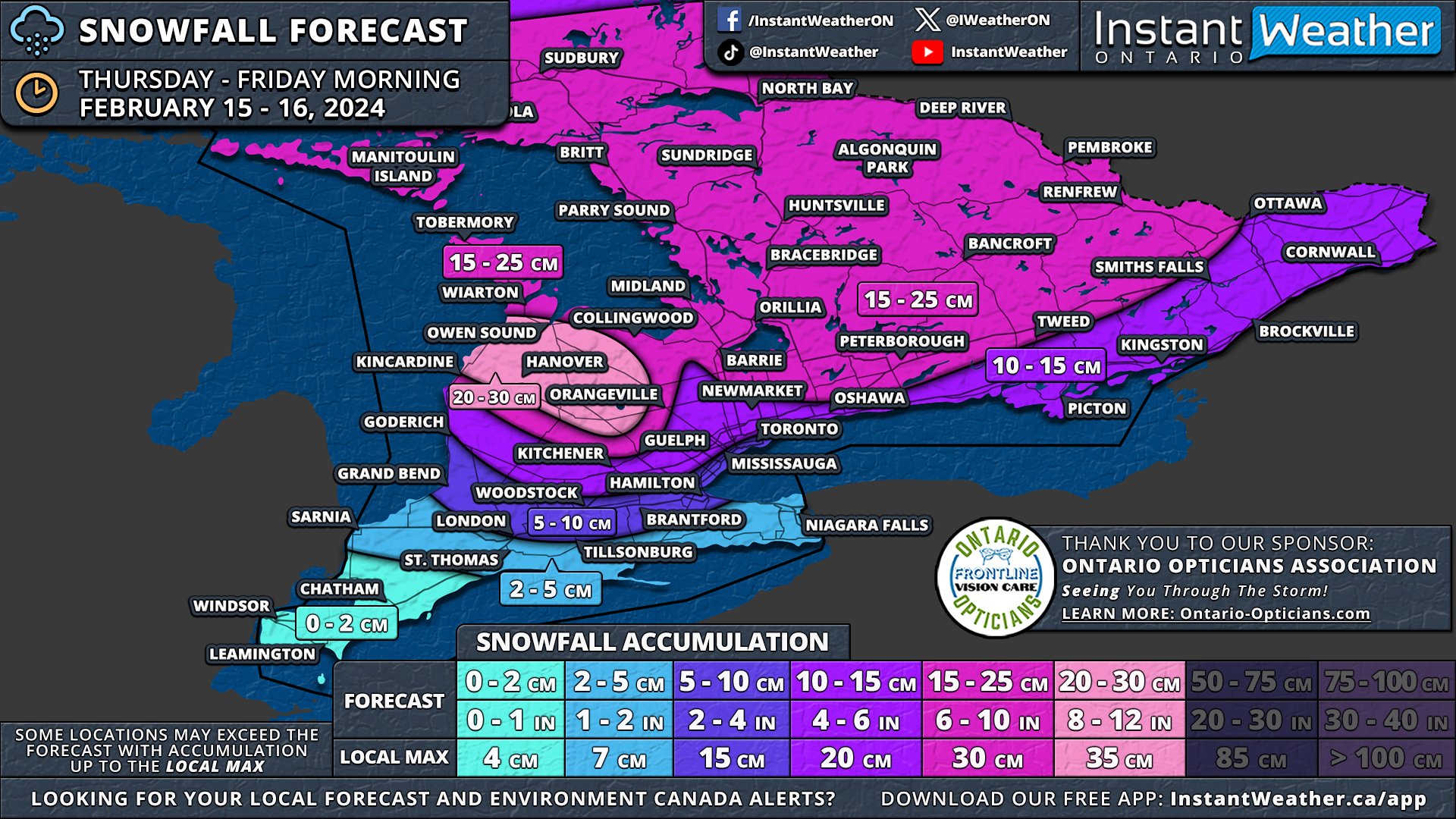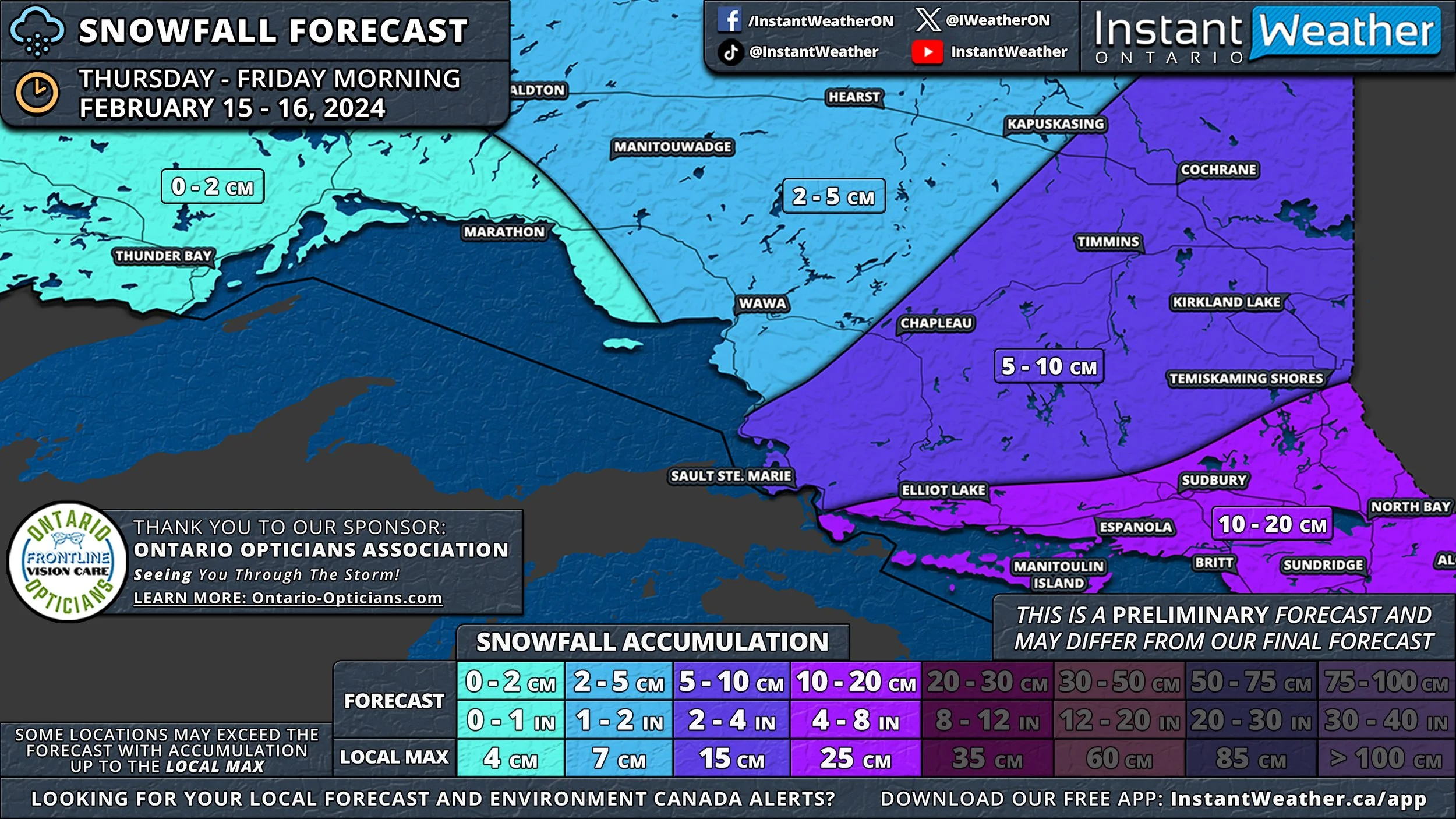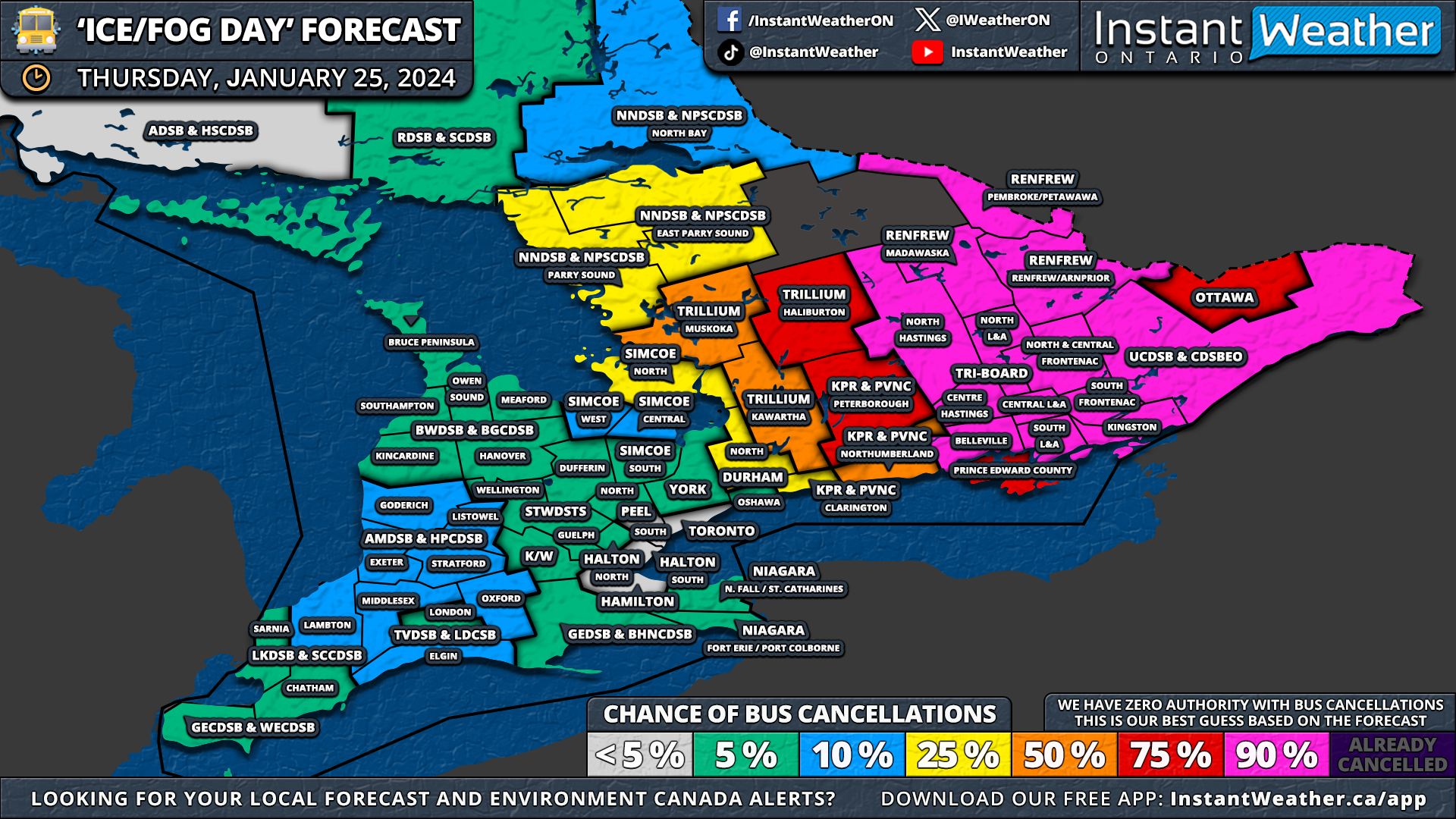Flash Freeze Threatens Wednesday Afternoon/Evening Commute Across Southern Ontario
/NOTE: YOU CAN CLICK ON THE MAP TO OPEN A ZOOMABLE IMAGE
After experiencing a series of thunderstorms and Ontario's first 20°C temperature of the season recorded in Windsor on Tuesday, we're on the brink of a significant shift as we head into Wednesday. It feels like we're at the peak of a roller coaster, about to dive back down into winter-like temperatures.
This transition will be marked by a sharp cold front, leading to a rapid decrease in temperatures. Expect to see temperatures plummet from the upper single digits or low teens to well below the freezing mark within just a few hours on Wednesday. With roads and surfaces still wet from previous rainfall, a 'flash freeze' is almost certain, where all moisture on surfaces will quickly freeze, turning to ice.
The severity of the flash freeze will differ across regions, with Central and Eastern Ontario witnessing the most dramatic temperature drops — from near double digits to the freezing mark within an hour or two in the afternoon to early evening. In Southwestern Ontario and the Golden Horseshoe, the temperature will initially drop to just above freezing, with a more gradual descent toward the freezing mark. This difference in temperature change rate will significantly impact the flash freeze threat, with a slower onset for these areas.
Following the cold front, lake effect snow will begin to form around Lake Huron and Georgian Bay from Wednesday evening into Thursday. While specifics will be detailed in a separate forecast, it's likely that traditional snowbelt regions could see upwards of 20-30cm of snow by week's end. However, this snow won't linger, as milder air is forecasted to return by the weekend.
Wednesday morning will greet you with temperatures well above seasonal, in the mid to upper single digits through Central and Eastern Ontario, and possibly even double digits in the southwest. This warmth is extraordinary for this time of the year, especially considering it will occur in the morning, typically cooler than peak daytime temperatures. Windsor, Chatham, and Sarnia could see temperatures ranging from 12 to 15°C, making them the expected hotspots.
The onset of change will start later in the morning as the cold front approaches. Much of Southern Ontario will still experience mild temperatures of 6 to 9°C, except along the Lake Huron shoreline, where temperatures will be closer to 3°C, and near-freezing on the Bruce Peninsula.
Northeastern Ontario will display the stark contrast in temperature gradients. North Bay and Sudbury will enjoy continued warmth from the south, with temperatures of 2 to 6°C, while Elliot Lake and areas towards Temiskaming Shores will be among the first to experience the cold plunge raging from -3 to -12°C.
By early afternoon on Wednesday, the cold air will start to dominate, pushing the warm air east and causing temperatures to drop below freezing across much of Southwestern and Central Ontario. The Grey-Bruce region will see temperatures between -3°C to -5°C by 1 PM. The freezing line will sweep across Central Ontario and the Golden Horseshoe early in the afternoon.
Northeastern Ontario will see Sudbury's temperatures drop from 3-5°C in the morning to near -9°C by the afternoon. While North Bay will follow Sudbury’s lead by the mid to late afternoon hours.
By 4 PM, the last areas to experience the drop will be in the Ottawa valley, with temperatures nearing 12°C in the Brockville and Cornwall area. The rest of Southern Ontario will have already experienced the temperature drop and will hover at or slightly below the freezing mark through the afternoon.
As night falls, the entire region of Southern Ontario will see temperatures plummet, with Eastern Ontario experiencing the drop around dinner time. Expect temperatures to range from -3 to -5°C in Southwestern Ontario and the Golden Horseshoe, while Central Ontario might see temperatures dip into the negative double digits.
By Thursday morning, the cold will intensify, with wind chills potentially making it feel like the -20s in parts of Southern Ontario. Be sure to bundle up before heading out the door on Thursday!


















































